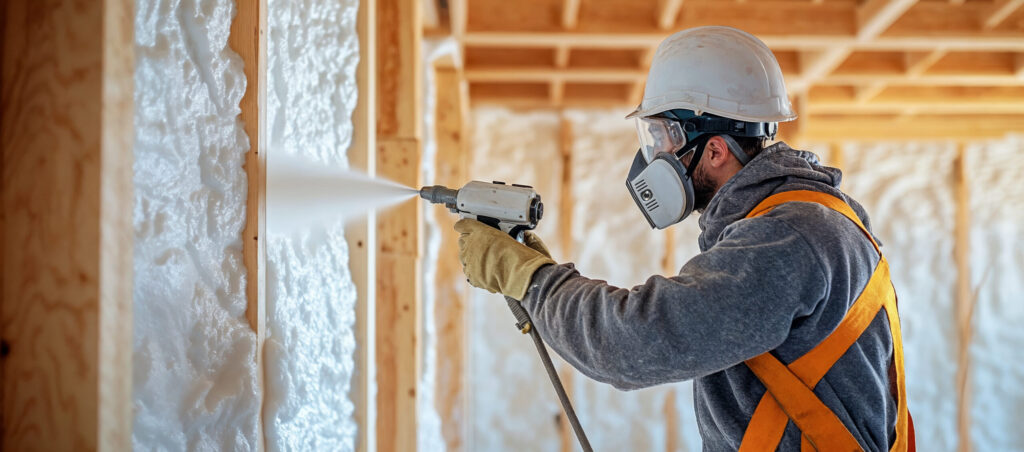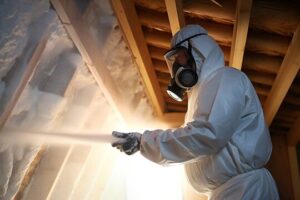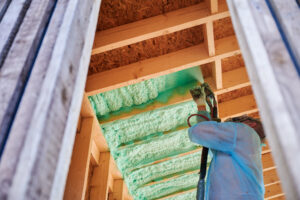Spray Foam Insulation in the Texas Hill Country
Why {primary.title()} Fits Hill Country Homes
From limestone farmhouses to modern barndominiums, structures here face intense solar gain, wide daily swings, and seasonal blue northers. Properly applied {primary} bonds to wood, masonry, and metal, forming a continuous thermal and air layer. That continuity makes it ideal for vaulted ceilings, irregular cavities, and complex rooflines.
Many clients pair {primary} with {k5} strategies like duct sealing and right-sized HVAC. Together, these upgrades create consistent comfort while lowering monthly costs.
Open-Cell vs. Closed-Cell
Choosing between {k2} and {k3} depends on your goals. Both options deliver air sealing; they differ in density, R-value per inch, and moisture behavior.
- {k2}: lighter density, excellent for roofs and interior walls where sound control and expansive coverage matter. Under roof decks, it creates a semi-conditioned space that protects ducts and reduces attic temperatures.
- {k3}: higher density, exceptional R-value per inch, and added structural rigidity. It adheres to metal panels and is popular in shops, barns, and barndominiums that need resilience against condensation.
We specify the right mix of {k2}, {k3}, and {primary} assemblies after a site assessment, balancing performance, budget, and code requirements.
Where {primary.title()} Makes the Biggest Impact
Targeting common weak points delivers fast, visible results:
- Roof decks & attics: Creating a sealed roof plane with {primary} turns vented attics into protected, low-load spaces. For search relevance, clients often describe this as {k4} because it solves the region’s toughest heat problems.
- Exterior walls: Uneven cavities and penetrations benefit from {primary}, which expands to fill gaps that other materials miss.
- Rim joists & crawl spaces: Air leaks here lead to drafts and humidity swings. Applying {primary} stabilizes floors and improves indoor air quality.
- Garages & bonus rooms: Workshop conversions and over-garage suites gain real comfort when {primary} eliminates hidden leakage paths.
- Metal buildings: With {k3}, shops and storage become quieter and drier, while {k2} can serve interior partitions needing sound damping.
Comfort, Bills, and the Value of Air Sealing
The air barrier is the secret weapon. Without it, conditioned air escapes and outdoor air sneaks in. By addressing both, {primary} often reduces runtime, evens out temperatures, and supports {k5} targets without sacrificing comfort.
Families notice fewer hot and cold spots, better humidity control, and quieter rooms. Those improvements add up to a home that simply feels better to live in, and they show up on utility statements month after month.
R-Values, Codes, and Best Practices
Spray Foam Insulation in the Texas Hill Country
Serving: Fredericksburg, Dripping Springs, Boerne, Wimberley, Blanco, Johnson City, and Canyon Lake
What Is Spray Foam Insulation?
At its core, spray foam insulation is a two-component material applied as a liquid that expands into a durable, seamless foam. It fills cracks, gaps, and hard-to-reach cavities that fiber batts and blown-in products often miss. Because it’s both an insulator and an air seal, spray foam insulation helps your HVAC do less work to maintain steady temperatures, even during those 100°+ afternoons in August or blustery blue-northers in January.
Why Spray Foam Insulation Works So Well in the Texas Hill Country
Limestone terrain, pier-and-beam foundations, vaulted ceilings, and metal roofs are common across our region, and each presents unique energy challenges. Spray foam insulation conforms to every surface, bonding to wood, metal, and masonry to reduce conductive heat flow and block infiltration. In practical terms, that means cooler rooms in late summer, fewer cold spots in winter, and quieter interiors on windy days.
Humidity is another Hill Country reality. Because spray foam insulation dramatically reduces moist air movement through your building shell, it supports better indoor humidity control and helps limit the conditions in which condensation and mold can thrive.
Open-Cell vs. Closed-Cell: Which Spray Foam Is Right for You?
Choosing the right spray foam insulation comes down to your goals, budget, and building assembly. We install both open-cell and closed-cell formulations and will recommend what fits best for your project.
- Open-cell foam: Excellent for interior applications (attics, wall cavities, sound-control). It provides robust air sealing with a lighter density. Many Hill Country homeowners use open-cell spray foam insulation under roof decks to create a comfortable, semi-conditioned attic.
- Closed-cell foam: Denser, higher R-value per inch, and adds structural rigidity. It’s often chosen for metal buildings, crawlspaces, exterior walls, and areas where additional moisture resistance is beneficial.
Where Spray Foam Delivers the Biggest Impact
Most heat gain and loss happens where air leaks and insulation are weakest. Strategic applications of spray foam insulation can transform performance in these areas:
- Attics & roof decks: A conditioned or semi-conditioned attic limits ductwork losses and dramatically reduces radiant heat transfer under metal roofing.
- Exterior walls: Fill voids and irregular cavities for a continuous thermal and air barrier.
- Rim joists & crawlspaces: Seal notorious leakage points to cut drafts and deter pests.
- Garages & bonus spaces: Improve comfort in workshops, in-law suites, or over-garage rooms.
- Metal buildings & barndominiums: Pair structure with insulation that resists condensation and adds stiffness.
Energy, Comfort, and Indoor Air Quality Benefits
With spray foam insulation, the air sealing component is as valuable as the R-value. By reducing uncontrolled air exchange, homes feel less drafty and HVAC systems cycle less often. You’ll notice fewer hot and cold spots, steadier humidity, and quieter rooms because the foam also dampens sound transmission. For many homeowners, the biggest day-to-day benefit is simple: the house just feels better.
Want to dig deeper into the building-science behind air sealing and insulation? Explore resources from ENERGY STAR on sealing & insulating and the U.S. Department of Energy on air sealing.
R-Values, Codes, and Safety
Building codes vary by jurisdiction, but our team sizes your spray foam insulation to meet or exceed local requirements while respecting your budget and project timeline. We also follow manufacturer and code guidelines for ignition barriers or thermal barriers where required. The result is a system that’s not only efficient but also code-compliant and safe.
Our 5-Step Installation Process
- Site visit & assessment: We evaluate your structure, leakage points, roof assembly, and mechanicals to determine where spray foam insulation will provide the best return.
- Proposal & options: You’ll get a clear scope comparing open-cell and closed-cell choices, thickness targets, and any prep or ventilation needs.
- Preparation: We protect finishes, mask off adjacent areas, and ensure surfaces are ready for proper adhesion.
- Installation: Our trained crew applies spray foam insulation in controlled lifts for consistent coverage and quality.
- Quality check & cleanup: We verify thickness, even coverage, and address details like transitions and penetrations before we button up the jobsite.
Costs and Return on Investment
While upfront costs are higher than fiberglass batts, spray foam insulation often pays back through smaller HVAC equipment choices, fewer service calls, and lower monthly energy bills. Over time, the combination of comfort and efficiency creates value that budget options rarely match.
How Spray Foam Compares to Fiberglass and Cellulose
Traditional materials can insulate, but they don’t seal. Air leaks bypass R-value and erode real-world performance. Because spray foam insulation expands to fill gaps and bond to framing, it maintains effectiveness over time instead of slumping or leaving voids. In retrofit projects, we frequently see spray foam insulation solve chronic comfort complaints that persisted even after adding more batts or blown-in fill.
For Builders, Remodelers, and Metal-Building Owners
Schedules matter. Our crews are disciplined about coordination, jobsite protection, and communication so you stay on track. We design spray foam insulation packages that align with your build sequence—framing, MEP rough-ins, and inspections—so there are no surprises when it’s time to close up walls or set rooftop equipment.
Health and Moisture Management
By limiting humid outdoor air from entering walls and attics, spray foam insulation makes moisture control more predictable. You still need proper ventilation, drainage, and flashing, but the foam’s air barrier reduces the chance of condensation inside assemblies. For general guidance on moisture and indoor air quality, see the EPA’s Indoor Air Quality resources.
Common Myths—& Straight Answers
“My attic needs to breathe.” Your house needs controlled ventilation—yes—but not uncontrolled leakage. Spray foam insulation reduces random infiltration so your mechanical ventilation can do its job efficiently.
“I’ll just add more batts.” Without air sealing, you’re still losing conditioned air. Combining air seal and insulation in one step is exactly what spray foam insulation was made for.
Frequently Asked Questions
How long does it last?
Properly installed, spray foam insulation is a durable building component that performs for the life of the structure under normal conditions.
Will it make my HVAC smaller?
Many projects allow for right-sizing equipment after adding spray foam insulation. Your HVAC professional can verify loads with a Manual J calculation.
Is it safe?
Once cured, spray foam insulation is inert. During installation, our team follows strict safety protocols and ventilation practices per manufacturer guidelines.
Can I use it with a metal roof?
Absolutely. Closed-cell spray foam insulation is popular under metal roof decks because it adheres, adds stiffness, and helps control condensation.
Do you handle existing homes?
Yes. We retrofit attics, crawlspaces, and select wall areas with spray foam insulation, tailoring methods to minimize disruption and maximize results.
Proudly Serving the Texas Hill Country
Valley Thermal Solutions provides spray foam insulation for homes, ranch properties, barndominiums, and businesses across Fredericksburg, Dripping Springs, Boerne, Wimberley, Blanco, Johnson City, and Canyon Lake. From historic homes to new builds, we bring local experience, trustworthy crews, and a commitment to clean jobsites and clear communication.
Get Your Free, No-Pressure Estimate
Ready to improve comfort and cut energy waste? Contact Valley Thermal Solutions for a site visit and detailed proposal tailored to your goals and budget. We’ll explain options, timelines, and what to expect—so your project moves forward with confidence.
Learn more about air sealing from the U.S. Department of Energy





